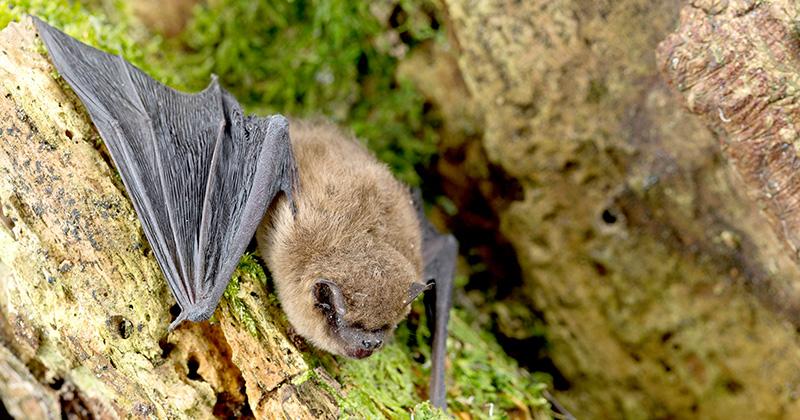
Out of the estimated 1,100 species of bats in the world, 18 of them reside in the UK. However as nocturnal mammals, it can be difficult to spot a bat in the wild, especially when some can reach flight speeds of up to 60mph.
In our new blog series, we’ll be focusing on a different species of bat each month, to help you determine your Brandt’s from your barbastelles, and your Natterer’s from your noctules. To start things off, we’re looking at one of the most widespread of Britain’s bats, the common pipistrelle.
What Are Their Characteristics?
There are three species of pipistrelle in the UK: The common and soprano (which together account for 75% of all bat sightings in the UK and which were only recognised as separate species in the 1990’s), and the Nathusius’.
The original word for bat was flittermouse… possibly due to the pipistrelle’s jerky flight.
The common pipistrelle is not only one of the smallest bats found in the UK, but also the most frequently seen. It weighs in at a tiny 3g-8g (a one penny piece weighs 3.5g) and is between 35mm-45mm in length (similar to an AAA battery).
The common pipistrelle is a medium-dark brown in colour and its echolocation call can be heard on a bat detector at around 45 kHz. It has a recorded lifespan of up to 16 years.
Where Can They Be Found?
This species of bat can be found all over the world including South-western Asia, North Africa and Europe. If you’re looking for one a little closer to home, the common pipistrelle’s UK habitat is typically woodlands, gardens, farmlands, heathlands and urban areas.
You’re most likely to see a common pipistrelle in the summer evenings, while they are active. They can be found roosting in places such as trees, roof spaces and bat boxes, and are one of the most common species found in buildings.
Breeding season is between September and November, where males perform impressive flying displays in a bid to catch the attention of females. Males can gain up to 10 mates this way! In spring, females bond together in maternity roosts to give birth and raise their young.
Between November and April, this species of bat goes into hibernation, saving energy over the colder months, when food is harder to find. During this time, their body temperature drops, and their breathing and metabolic rates slow down, as they survive on the body fat they have stored.
What Does Their Diet Consist Of?
The common pipistrelle eats a wide range of insects, gnats, moths and mosquitos. For such small mammals, these bats have a huge appetite and can consume up to 3000 insects in one evening!
The bats feed for a couple of hours after dusk has fallen before returning to their roosts. Flying 2m-10m above ground, this species catches their prey using a technique called ‘aerial hawking,’ where prey is pursued and caught in flight and eaten. Like many flying creatures, the common pipistrelle catches prey in its mouth, rather than with its claws.
How Can We Help Protect Them?
Populations of common pippistrelles declined greatly during the 20th century. In 2005, it was estimated there were around 2,430,000 common pipistrelles in the UK, and thanks to strict laws protecting them, populations now seem to be stable. However they still face threats from climate change and the loss of their insect food.
There are things you can do to help support conservation work across the country. Installing a bat box in your garden near to trees and hedges provides a safe roosting spot, while planting night-scented flowers or building a pond (both of which will attract insects). You can find a list of night-scented plants at the Suffolk Wildlife Trust.
Want to learn more about pipistrelles? We stock a wide range of equipment for bat workers and school ecology which we’ll ship out to you with the fastest possible delivery. If you’d like to know more about any of our products, please don’t hesitate to contact us.
Sources:
http://www.bats.org.uk/pages/uk_bats.html
https://www.woodlandtrust.org.uk/blogs/woodland-trust/2016/03/british-bats/


